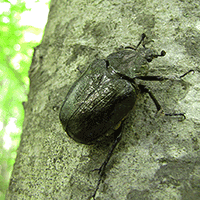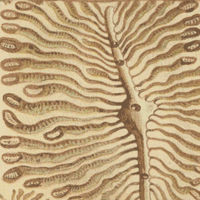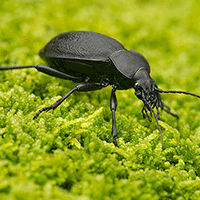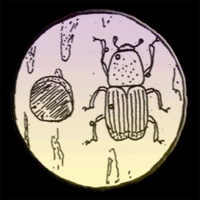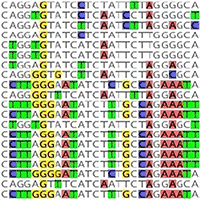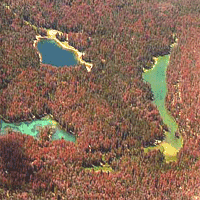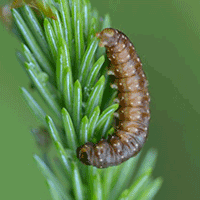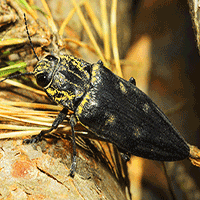
Distribution and abundance of the alien Xylosandrus germanus and other ambrosia beetles (Coleoptera: Curculionidae, Scolytinae) in different forest stands in central Slovenia
Tine Hauptman , Roman Pavlin, Petra Grošelj, Maja Jurc
iForest - Biogeosciences and Forestry, Volume 12, Issue 5, Pages 451-458 (2019)
doi: https://doi.org/10.3832/ifor3114-012
Published: Sep 29, 2019 - Copyright © 2019 SISEF
Research Articles
Abstract
The East Asian ambrosia beetle (Xylosandrus germanus - Blandford 1894) is an invasive species that has become successfully established in Europe and North America. In Slovenia, X. germanus was first recorded in 2000 in the western part of the country, and since 2008 the species has also been identified in other parts of Slovenia. The first economic damage was recorded in 2016 after a massive attack on recently felled logs of different tree species, spurring research into this non-native invasive species. To examine the distribution and abundance of X. germanus compared to other ambrosia beetles and to determine voltinism and the flight period of the species in our climatic conditions, we deployed 19 ethanol-baited traps from March to November 2017 in oak-, beech- and fir-dominated forest stands in central Slovenia. To verify the vertical distribution of X. germanus, traps were installed at altitudes ranging from 303 m to 941 m a.s.l. Furthermore, the impact of the ice storm that hit Slovenia in 2014 on the abundance of X. germanus was also studied. Non-native X. germanus represented 71.8% of the total catch and was significantly more abundant than the other five most common species: Xyleborinus saxesenii (20.0%), Xyleborus monographus (3.6%), Anisandrus dispar (2.5%), Trypodendron domesticum (1.2%) and Trypodendron signatum (0.6%). X. germanus was most abundant in beech-dominated stands, but the differences between forest types were not significant. The species was found along the entire altitudinal gradient. Our results indicate that the swarming of X. germanus in lowland forests may already occur by the middle of March. Maximum flying activity was observed in May and early June in forests below 600 m a.s.l. and at the end of May and in June in forests above 700 m a.s.l. Only one generation per year was observed. The ice storm positively affected the abundance of X. germanus, especially in areas where sanitary logging was delayed. Xyleborinus attenuatus was detected for the first time in Slovenia.
Keywords
Xylosandrus germanus, Ambrosia Beetles, Black Timber Bark Beetle, Invasive Species, Habitat Preference, Monitoring, Ethanol-baited Traps
Authors’ Info
Authors’ address
Roman Pavlin
Petra Grošelj 0000-0001-9363-9783
Maja Jurc 0000-0002-8666-1453
Department of Forestry and Renewable Forest Resources, Biotechnical Faculty, University of Ljubljana, Večna pot 83, SI-1000 Ljubljana (Slovenia)
Corresponding author
Paper Info
Citation
Hauptman T, Pavlin R, Grošelj P, Jurc M (2019). Distribution and abundance of the alien Xylosandrus germanus and other ambrosia beetles (Coleoptera: Curculionidae, Scolytinae) in different forest stands in central Slovenia. iForest 12: 451-458. - doi: 10.3832/ifor3114-012
Academic Editor
Massimo Faccoli
Paper history
Received: Mar 29, 2019
Accepted: Jul 27, 2019
First online: Sep 29, 2019
Publication Date: Oct 31, 2019
Publication Time: 2.13 months
Copyright Information
© SISEF - The Italian Society of Silviculture and Forest Ecology 2019
Open Access
This article is distributed under the terms of the Creative Commons Attribution-Non Commercial 4.0 International (https://creativecommons.org/licenses/by-nc/4.0/), which permits unrestricted use, distribution, and reproduction in any medium, provided you give appropriate credit to the original author(s) and the source, provide a link to the Creative Commons license, and indicate if changes were made.
Web Metrics
Breakdown by View Type
Article Usage
Total Article Views: 50218
(from publication date up to now)
Breakdown by View Type
HTML Page Views: 36565
Abstract Page Views: 9509
PDF Downloads: 3311
Citation/Reference Downloads: 9
XML Downloads: 824
Web Metrics
Days since publication: 2265
Overall contacts: 50218
Avg. contacts per week: 155.20
Citation Metrics
Article Citations
Article citations are based on data periodically collected from the Clarivate Web of Science web site
(last update: Mar 2025)
Total number of cites (since 2019): 12
Average cites per year: 1.71
Publication Metrics
by Dimensions ©
Articles citing this article
List of the papers citing this article based on CrossRef Cited-by.
References
Coléopteres Scolytides [Bark beetles]. Faune de France 50: 1-320. [in French]
Gscholar
Rapid pest risk analysis Xylosandrus germanus. Swedish University of Agricultural Sciences, Uppsala, Sweden, pp. 22.
Gscholar
Rapid pest risk analysis Xyleborinus attenuatus. Swedish University of Agricultural Sciences, Uppsala, Sweden, pp. 17.
Gscholar
Podnebne razmere v januarju 2017 [Climate in January 2017]. Naše okolje. Mesečni bilten Agencije RS za okolje 24 (1): 3-24. [in Slovenian]
Gscholar
Bivoltinism of European hardwood ambrosia beetle Trypodendron domesticum in Croatian lowland oak stands of Jastrebarski Lugovi. Šumarski list 137 (9-10): 495-498.
Gscholar
Distribution, habitat preference, and management of the invasive ambrosia beetle Xylosandrus germanus (Coleoptera: Curculionidae, Scolytinae) in European forests with an emphasis on the West Carpathians. Forests 10 (1): 10.
CrossRef | Gscholar
Popis rastlin in živali na Brdu pri Kranju [An inventory of plants and animals of Brdo near Kranj]. Kronika (Ljubljana) 52 (2): 273-284. [in Slovenian]
Gscholar
Handbuch zur Bestimmung der Europäischen Borkenkäfer [Brief illustrated key to european bark beetles]. Verlag M & H Schaper, Hannover, Germany, pp. 184. [in German]
Gscholar
Ambrozijski podlubnik (Xylosandrus germanus) [Ambrosia bark beetle (Xylosandrus germanus)]. Gozdarski vestnik 5/6 (76): 3-4. [in Slovenian]
Gscholar
Xylobionte Käfer (Insecta: Coleoptera part.) in Wäldern des Biosphärenparks Wienerwald (Österreich: Niederösterreich, Wien) [Saproxylic Beetles (Insecta: Coleoptera part.) in forests of the Biosphere Reserve Wienerwald (Austria: Lower Austria, Vienna)]. Wissenschaftliche Mitteilungen des Niederösterreichischen Landesmuseums, St. Pölten 25: 331-362. [in German]
Gscholar
Gozdna zoologija (univerzitetni učbenik) [Forest Zoology (University textbook)]. Bitehniška fakulteta, Oddelek za Gozdarstvo in obnovljive gozdne vire, Ljubljana, Slovenia, pp. 348. [in Slovenian]
Gscholar
Xylosandrus germanus (Blandfort, 1894) (Curculionidae: Scolytinae) in Slovenia. In: Proceeding of the “SIEEC 22, Symposium Internationale Entomofaunisticum Europae Centralis”. Varaždin (Croatia), 26 June - 03 July 2011. Gradski muzej, Varaždin, Croatia, pp. 33-34.
Gscholar
Zentral- und westpaläarktische Borken- und Kernkäfer (Coleoptera: Scolytidae, Platypodidae) [Central and western Palearctic bark and ambrosia beetles (Coleoptera: Scolytidae, Platypodidae)]. Pro Entomologia, Naturhistorisches Museum, Basel, Switzerland, pp. 310. [in German]
Gscholar
Species dependent influence of (-)-α-pinene on attraction of ambrosia beetles (Coleoptera: Curculionidae: Scolytinae) to ethanol-baited traps in nursery agroecosystems. Journal of Economic Entomology 104 (2): 574-579.
CrossRef | Gscholar
Biology, ecology, and management of nonnative ambrosia beetles (Coleoptera: Curculionidae: Scolytinae) in ornamental plant nurseries. Journal of Integrated Pest Management 7 (1): 25.
CrossRef | Gscholar
Dinamika vnosa tujerodnih fitofagnih žuželk in pršic v Slovenijo [The dynamics of introduction of alien phytophagous insects and mites in Slovenia]. Acta entomologica Slovenica 21 (2): 85-122. [in Slovenian]
Gscholar
Podlubniki (Scolytidae) Slovenije: obvladovanje podlubnikov [Bark beetles (Scolytidae) of Slovenia: control of bark beetles]. Zveza društev inženirjev in tehnikov gozdarstva in lesarstva Slovenije, Gozdarska založba, Ljubljana, Slovenia, pp. 128. [in Slovenian]
Gscholar
The operational plan for the sanitation of the damaged forest after the sleet event in February 2014. Slovenian Forest Service, Ljubljana, Slovenia, pp. 66.
Gscholar
Timber: database of tree felling. Slovenian Forest Service, Ljubljana, Slovenia. [CD-ROM]
Gscholar

